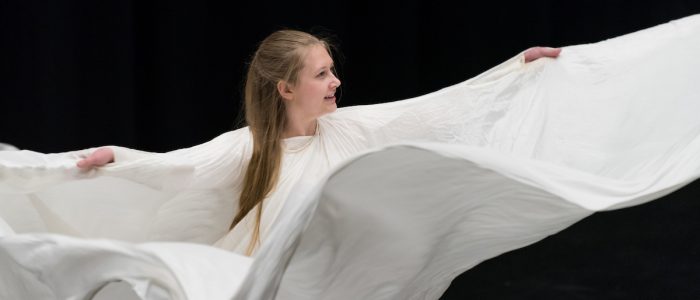College of Arts & Sciences students made a strong showing at the 14th Annual Spokane Intercollegiate Research Conference, joined by students from fellow Spokane institutions Eastern Washington University and Whitworth University. SIRC was organized, sponsored, and hosted by the College’s new Center for Undergraduate Research & Creative Inquiry (CURCI) and held April 21 and 22 on Gonzaga’s campus, where students presented research on the humanities, arts, sciences, and beyond.
Making Waves in Sustainable Business
Environmental studies students Heather Ryan ’17, Makenna Sellers ’17, and Tyler Kimbrell-Knutson ’17 presented “Measuring Beyond the Mainstream: Ecosystem Services and Economic Viability of the Spokane River,” a research project focusing on the link between river restoration and economic viability along the Spokane River near the city’s University District. The students analyzed land value, water recreation, and ecosystem services, and found that area businesses would benefit financially by contributing to river restoration projects.
“There’s a lot of opportunity for business,” Sellers explains, especially for a shared-ownership model, and they encourage businesses to give back to the Spokane River. Their final paper will be published on the U-District website, where it will be a community resource in support of one our region’s greatest gifts.
Getting Out the Vote
Reflecting on her summer spent registering Nevadans to vote in advance of the 2016 election, sociology major Callen Aten ’18 says, “People knew they’d be impacted by the issues at stake at the national and state level, but they felt so disempowered. I was furious.” This experience motivated Aten’s interest in studying what shapes the way people vote—or don’t vote.
At SIRC, Aten presented “When Youth Vote: The Impact of Identity and Policies on Voting Behaviors at Gonzaga University,” which explored students’ voting rationale in last November’s presidential election, as well as voting patterns among different demographics. Throughout the year, Aten worked with peers and sociology faculty, particularly Drs. Vik Ghumbir, Nicole Willms, and Joe Johnston. Still, she’s grateful for all the autonomy she had to direct her own research.
“You have to motivate yourself and figure out where you think your project needs to be,” she says. “That’s really valuable.”
Back into the Limelight
At SIRC, art major Elaina Pignolet ’17 presented research on American dancer, choreographer and interdisciplinary artist Loïe Fuller. “Fuller was an innovator, creator and collaborator,” Pignolet says. Originally from the Chicago suburbs, Fuller achieved her greatest fame in early-20th Century France, performing some 600 times on the Folies Bergère stage in Paris, though she is also well-known for her innovations in lighting design, costuming, and visual art. Yet, details of her biography are largely obscure; Pignolet’s research aims to bring her legacy to light.
“Loïe’s representation of what an interdisciplinary artist looks like has inspired me in so many areas,” Pignolet says. True to her word, Pignolet worked collaboratively with students and faculty across departments to implement her research. “I’ve gotten to help curate an exhibit in the Jundt Art Museum with my own work in it, be a rehearsal director, lecture on historical research, and so much more,” she says. “How many graduating artists can say they’ve done all that?”
These undergraduates’ research is a testament to the College’s mission of fostering scholarly inquiry, creativity, and collaboration, and engaging with meaningful problems in our communities. Their work and the skills they’ve developed will benefit themselves and our world for years to come.
